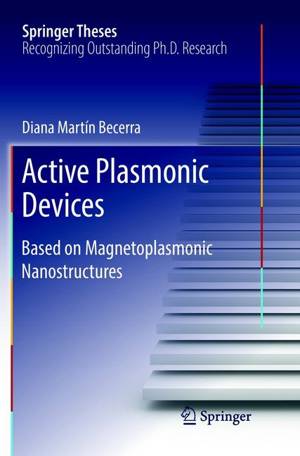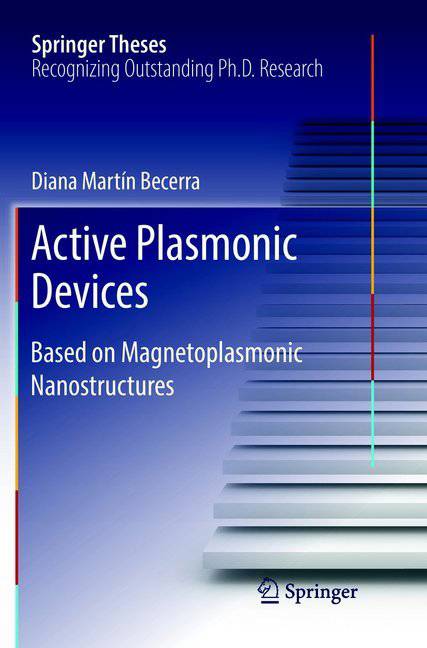
Door een staking bij bpost kan je online bestelling op dit moment iets langer onderweg zijn dan voorzien. Dringend iets nodig? Onze winkels ontvangen jou met open armen!
- Afhalen na 1 uur in een winkel met voorraad
- Gratis thuislevering in België vanaf € 30
- Ruim aanbod met 7 miljoen producten
Door een staking bij bpost kan je online bestelling op dit moment iets langer onderweg zijn dan voorzien. Dringend iets nodig? Onze winkels ontvangen jou met open armen!
- Afhalen na 1 uur in een winkel met voorraad
- Gratis thuislevering in België vanaf € 30
- Ruim aanbod met 7 miljoen producten
Zoeken
€ 105,45
+ 210 punten
Uitvoering
Omschrijving
This thesis investigates the effect of the magnetic field on propagating surface plasmon polaritons (SPPs), or surface plasmons for short. Above all, it focuses on using the magnetic field as an external agent to modify the properties of the SPPs, and therefore achieving active devices. Surface plasmons are evanescent waves that arise at metal-dielectric interfaces. They can be strongly confined (beyond the light diffraction limit), and provide a strong enhancement of the electromagnetic field at the interface. These waves have led to the development of plasmonic circuitry, which is a key candidate as an alternative to electronic circuitry and traditional optical telecommunication devices, since it is faster than the former and less bulky than the latter.
Adopting both a theoretical and an experimental point of view, the book analyzes the magnetic modulation in SPPs by means of an interferometer engraved in a multilayer combining Au and Co. In this interferometer, which acts like a modulator, the SPP magnetic modulation is studied in detail, as are the parameters that have a relevant impact on it, simple ways to enhance it, its spectral dependence, and the highly promising possibility of using this system for biosensing. The thesis ultimately arrives at the conclusion that this method can provide values of modulations similar to other active methods used in plasmonics.
Adopting both a theoretical and an experimental point of view, the book analyzes the magnetic modulation in SPPs by means of an interferometer engraved in a multilayer combining Au and Co. In this interferometer, which acts like a modulator, the SPP magnetic modulation is studied in detail, as are the parameters that have a relevant impact on it, simple ways to enhance it, its spectral dependence, and the highly promising possibility of using this system for biosensing. The thesis ultimately arrives at the conclusion that this method can provide values of modulations similar to other active methods used in plasmonics.
Specificaties
Betrokkenen
- Auteur(s):
- Uitgeverij:
Inhoud
- Aantal bladzijden:
- 113
- Taal:
- Engels
- Reeks:
Eigenschappen
- Productcode (EAN):
- 9783319839363
- Verschijningsdatum:
- 29/06/2018
- Uitvoering:
- Paperback
- Formaat:
- Trade paperback (VS)
- Afmetingen:
- 156 mm x 234 mm
- Gewicht:
- 204 g

Alleen bij Standaard Boekhandel
+ 210 punten op je klantenkaart van Standaard Boekhandel
Beoordelingen
We publiceren alleen reviews die voldoen aan de voorwaarden voor reviews. Bekijk onze voorwaarden voor reviews.











